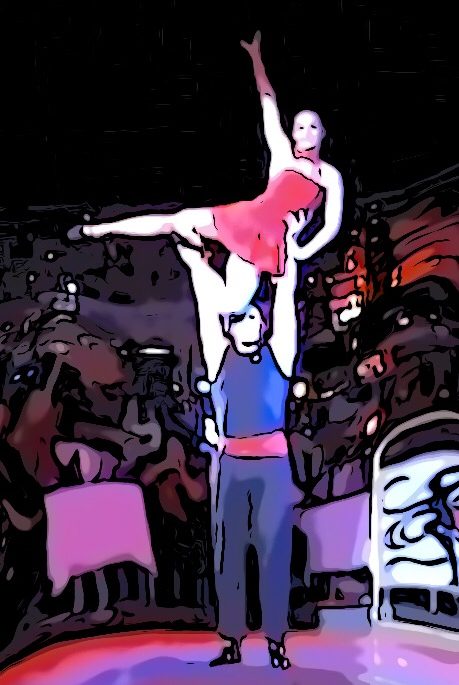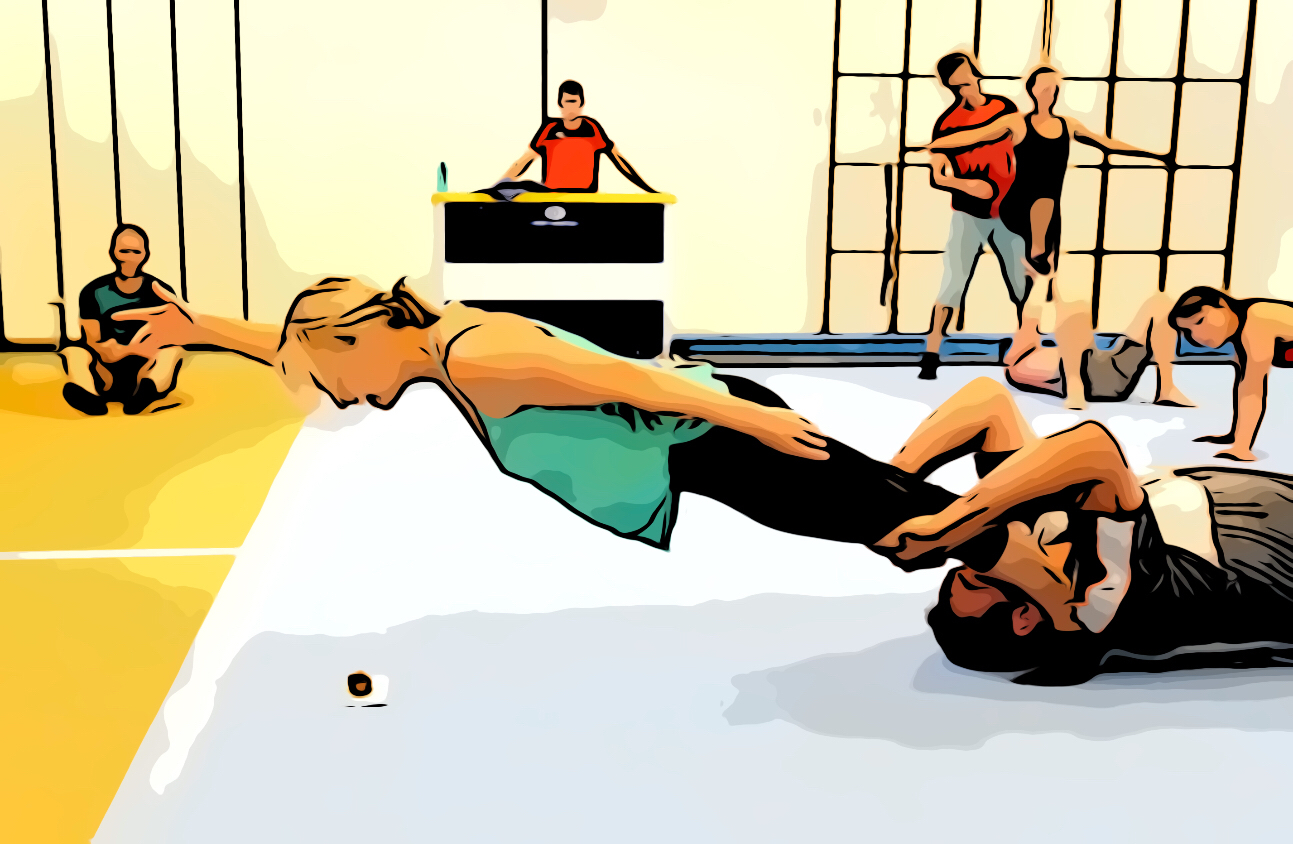There are 2 contact points within the libra. One is on pressure, the other one is pulling. So pretty much any position is possible where base and flyers can get hooked with hand or foot.
The flyer will not kept in the center of gravity and balanced. The pressure-contact point is mechanically seen an axis of rotation, via which the flyer is held in the air by means of a lever. The resulting shear forces are desirable and necessary, but should remain smooth! The weight of the flyer must be balanced with a corresponding counterweight from the base via this lever. The load on the musculoskeletal system is thus higher than in the normal balance and can be up to twice the weight of the flyer at the pressure point.
When beginning the libra, the base gains stability and saves power when he pushes this axis of rotation under the flyer.
Examples:
- Flag
- Base is lying, balancing the flyer in the hands with long arms in the shoulderstand. Flyer clings with his hands to the base’s knee, thus pulls him into the candle.
- Base standing, leaning backwards horizontally from the knees. Flyer in the back plane on the thighs of the base … the pulling is built up by using the arms.
- Flyer stands on the ground with his heels under the shoulders of the base and leans out of the base to the outside. The pulling is built up by using the hands of the base on the legs of the flyer (see image above).
The level of difficulty of these scales can be increased as desired, but the risk of crashes is rather low. However, tendons and muscles can be easily dragged and in the worst case, even torn.
Attention: There are enough examples of broken muscles in the acroscene …
Deutsch

